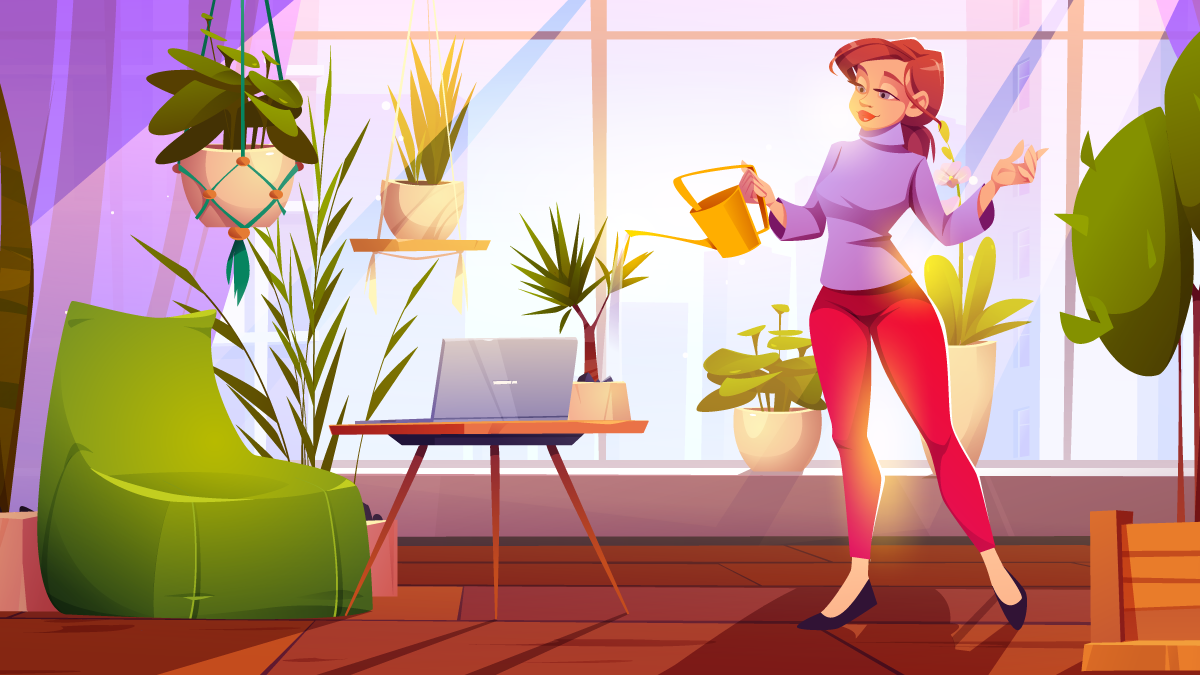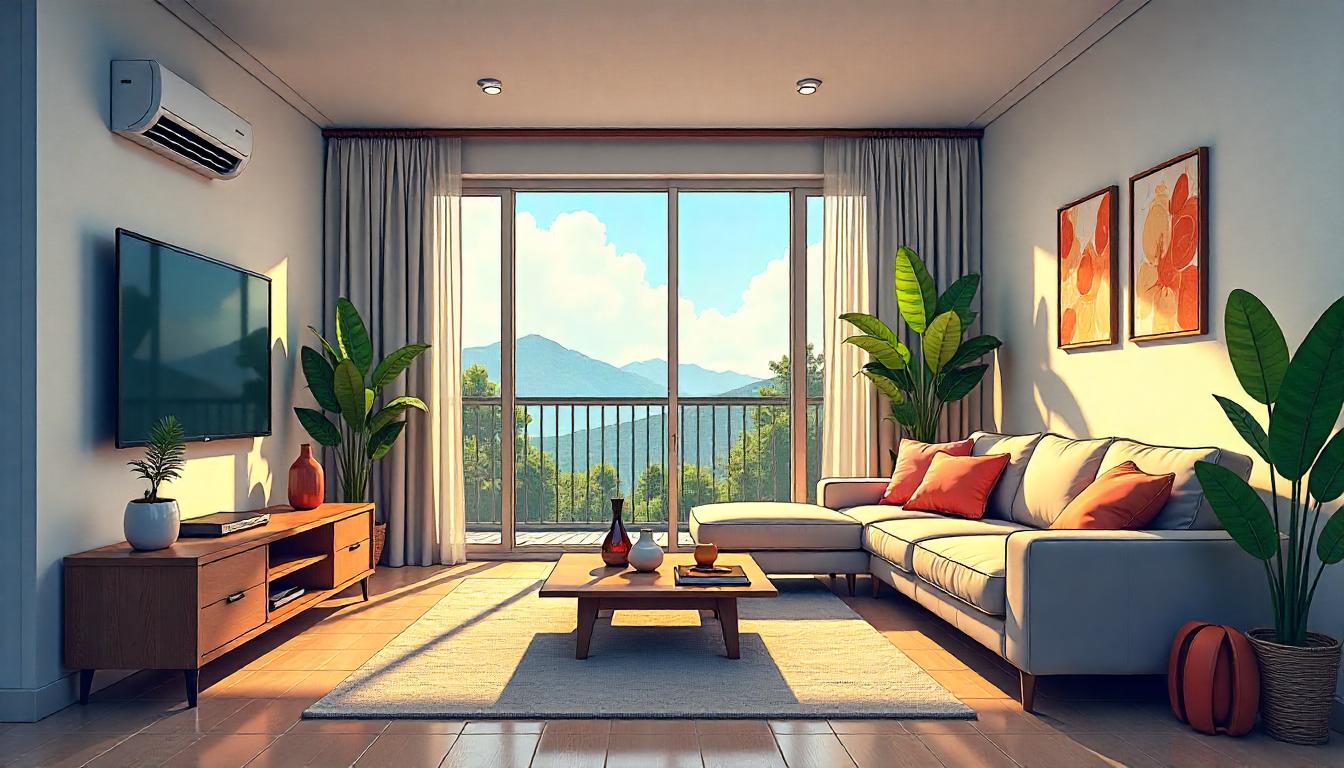
What is the best way to keep your houseplants healthy? There are many different aspects that can affect a plant’s health, but it all starts with proper watering. Plants need enough moisture in order to grow properly and prevent any type of root rot or fungus from forming on them. It’s also important to provide adequate lighting for plants so they don’t become weak or die off. Misting is another great way to ensure your plants stay healthy by providing the necessary humidity during the summer months when air outside may be very dry and hot. Finally, you’ll want to make sure there isn’t too much heat near your plants if they’re sensitive because this could cause them stress which will lead them into becoming unhealthy over time.
1. Watering
Most plants require one to two inches of water per week, so make sure you check the soil before watering your plants. If the soil is dry, go ahead and add a bit of water! Make sure to use room-temperature water when possible to avoid shocking them with cold water. Avoid over-watering your plants by ensuring that they drain well in a pot without a drainage hole. If there is no drainage hole in the pot, place a saucer under the container to collect excess moisture after watering until it stops draining from the base of the container, then discard any collected standing water.
2. Sunlight
Lots of sunlight helps keep flowers blooming longer or even year-round for houseplants during the winter months. Sufficient sunlight is especially important for succulents, which are desert plants. Most indoor houseplants, however, do best when kept away from direct light. You can research different types of grow lights for indoor plants, and pick one that suits your plants the most. The best light source for most houseplants is indirect sunlight or bright diffused light found in northern or eastern facing windows that receive some shade during the day.
3. Temperature
Most of your indoor plants will be quite comfortable at normal household temperatures of 18 to 22 degrees Celsius (65 to 72 degrees Fahrenheit). Some varieties such as peace lilies and poinsettias can tolerate colder winter temperatures if you move them indoors near a sunny window where they’ll be warm, but protected from drafts and hot air blowing directly on them from inside heating vents and fireplaces. Remember, cold drafts can be just as damaging to your plants as extremely hot air.
4. Soil and Fertilizer
When repotting a plant, it is very important that you use the proper type of soil for that specific plant. If using store-bought potting soil, make sure there is plenty of perlite or sand in the soil mix to allow for good drainage and aeration. Maintaining high humidity levels also helps promote healthy root growth, as well as help, prevent fungus from invading the roots of some types of houseplants such as African violets and gardenias. This can easily be done by placing a tray filled with stones and water underneath your container on top of a humidifier where the mist from the humidifier will be pulled through the stones and evaporated.
5. Repotting
Houseplants should be repotted every one to two years in a slightly larger pot using high-quality potting soil that contains both perlite or sand for good drainage and organic compost to promote healthy root growth. If your plant is root bound, it’s time to repot! Root-bound plants have roots growing around the inside of their containers. The best way to tell if a plant needs to be repotted is by removing it from its container and feeling how heavy it is compared with a similar size plant that has been recently repotted without being root bound or overcrowded. If you feel like picking up your plant often feels more like trying to lift a bowling ball, then you need to repot it.
6. Staking
If your plants are indoors for the summer months and require staking, buy 1/4-inch mesh plant ties at any nursery or garden center so they can grow through them as they reach for the light. Usually tying plants comes with practice, but if done incorrectly, it can harm your plants. You will want to tie your stem loosely to the stake rather than tightly around it because too much pressure on the stem could cause damage that inhibits nutrient flow and water uptake causing discoloration of leaves and stunting growth. If possible use pieces of old pantyhose instead of plant ties because they don’t contain chemicals that may affect your plants.
7. Pests and Disease
Houseplants that grow in warm, moist, and shady areas such as Boston ferns and palm trees are very susceptible to fungus and mold issues caused by too much humidity and moisture sitting on top of their leaves after watering or rainfall. To prevent this from happening, it’s best to place your plants in a well-ventilated area like an open window where the breeze will keep the air moving around them. When you water your plants always make sure to wash off any soil or other contaminants before placing them back inside their containers; likewise, if you splash water around when watering, wipe down the leaves immediately afterward to avoid fungal problems later on at the end of summer months when there are many hours of sunlight.
8. Misting Your Houseplants
Misting your houseplants is an easy way to provide them with extra humidity during dry summer months when outside air can be very hot, dry, and dusty. For best results mist early in the morning or late in the evening when temperatures are coolest because wet leaves can promote fungal diseases to grow on unsuspecting plants if they’re cold enough at night for water droplets to form on leaves that have been raining all day long. Even though misting may help keep your plant’s foliage clean throughout the hottest summer days, it should never take place within half an hour after watering your container plants as then you won’t know whether you’ve overwatered or underwatered your plant because of the extra humidity.
Misting your houseplants is an easy way to provide them with extra humidity during dry summer months. For best results mist early in the morning or late in the evening when temperatures are coolest because wet leaves can promote fungal diseases to grow on unsuspecting plants if they’re cold enough at night for water droplets to form on leaves that have been raining all day long. Even though misting may help keep your plant’s foliage clean throughout the hottest summer days, it should never take place within half an hour after watering your container plants as then you won’t know whether you’ve overwatered or underwatered your plant because of the extra humidity.




